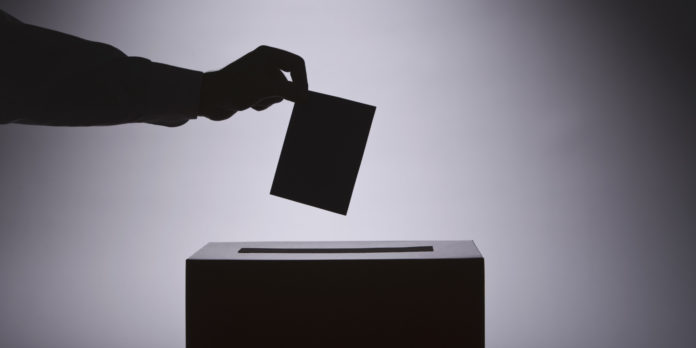As one moves from Uttar Pradesh to Punjab, identity-based votebanks are visibly less prominent in the discourse.
“Yaha to chahe takdi hai, chahe jhadu wale, ya panja – sabko vote milta hai” (scale, broom, hand — everyone gets votes in Punjab), a shopkeeper from Dera Bassi, right outside Chandigarh, says.
His most prominent political identity is not of caste or religion but of party, he defines himself as a “Congressi”.
This is not to deny the importance of identity-based factors in party preference, but rather to demonstrate that in Punjab, party is often abstracted away from social identity.
This also changes the way voters are mobilised on the ground.
And yet, it is this abstract character of party attachment that has left the door open for the Aam Aadmi Party (AAP) this time.
Party Democracy Model
In Punjab, groups and interests have coalesced around parties: the Shiromani Akali Dal (SAD), originally an explicitly religious party representing the rural Sikh class, and the Congress, having roots across social groups, including the state’s Hindus.
Power regularly changed hands between the two parties, establishing what political scientist Bernard Manin calls “party democracy” — where people vote for the party irrespective of the candidate.
In other words, a lot of voters base their decisions on partisan attachment, rather than personal attachment to the top leader — something seen when voters choose parties like the Trinamool Congress (TMC) or the Telangana Rashtra Samithi (TRS).
This is evident in the way three-time chief minister Amarinder Singh has been reduced to a bit player after being shunted out of the Congress.
But over the last two decades, the role of party and state have become almost indistinguishable.
A telltale sign of this fusion was the Akali regime running buses, making bread, transmitting television networks along with alleged illegal activities.
Similarly, on key issues like the drug problem or “beadbi” (sacrilege), there was little difference in the positions taken by these parties.
Both the Congress and SAD developed individual patronage systems, personally invested in promoting their businesses and outsourcing major public goods to friends and relatives, making individual candidates particularly powerful.
This blurring of the party-state line has made the partisan connection linking the society and the state increasingly difficult to sustain.
“The Congress candidate is not the MLA but still got a lot of work done. All village roads now have interlocked tiles.
Congress will lose Punjab, but he is on a strong footing,” acknowledges the Aam Aadmi Party (AAP) volunteer in a party booth in Dakha assembly constituency (AC).
This model of relying on support from individual candidates and their pure patronage networks is standard for SAD and Congress.
This can also change the strategic incentives of voters, who may vote for a candidate even if his or her party has little chance of forming the government.
A Different Kind of Party
An ascendant AAP looks completely different from the traditional parties; its only recognisable faces are CM aspirant Bhagwant Mann and party chief Arvind Kejriwal.
A young man in a village in Gidderbaha AC says, “I think the candidate for AAP might be a local, but no one has ever heard of him.”
When we ask about his interactions with the party, he says, “I’ve never seen a party worker from AAP here. We get all of our information about them from Facebook.
If this election followed what we see on Facebook, then 80% of the electorate would vote for AAP.” The young man also makes clear that this time he will be switching his vote from Congress to AAP.
All across Punjab, from supporters and detractors alike, no one really seems to mention the names of AAP’s candidates, only jhadu (broom) — AAP’s party symbol.
After a disappointing showing in 2017, AAP decimated its state unit rather than investing further. It’s most recognisable faces, such as H.S.
Phoolka, either left the party or were shunted out.
Whether or not deliberate, this lack of recognisable local faces has made it difficult for AAP’s opponents to link the party with local corruption or to hardline “pro-Khalistan” actors — a tactic that particularly spooked largely urban Hindu voters in Punjab the last time around.
Back in Phoolka’s former constituency, Dakha, an AAP volunteer senses a wave of support for the party, but he’s not sure it can convert this into votes with its weak organisation.
“Until we form the government, we won’t have a party structure,” he says.
It is this trade-off between voter preferences and organisational strength that will determine the results this time.
(Bhanu Joshi is a PhD candidate in political science at Brown University, Ashish Ranjan is an independent election researcher and Neelanjan Sircar is senior fellow at the Centre for Policy Research.)







